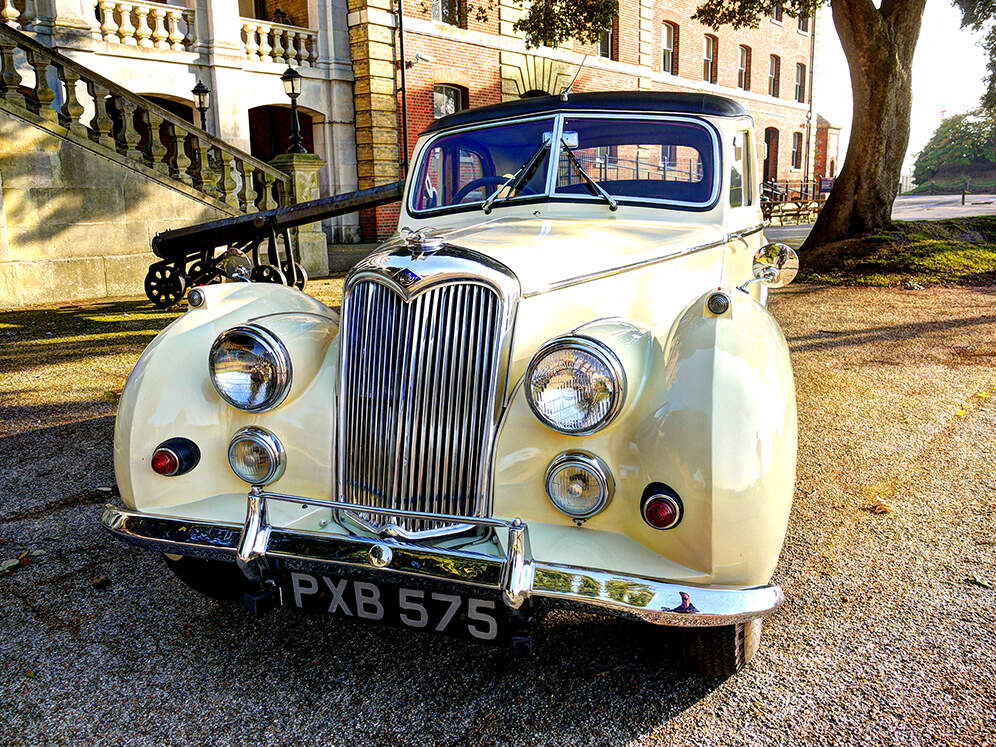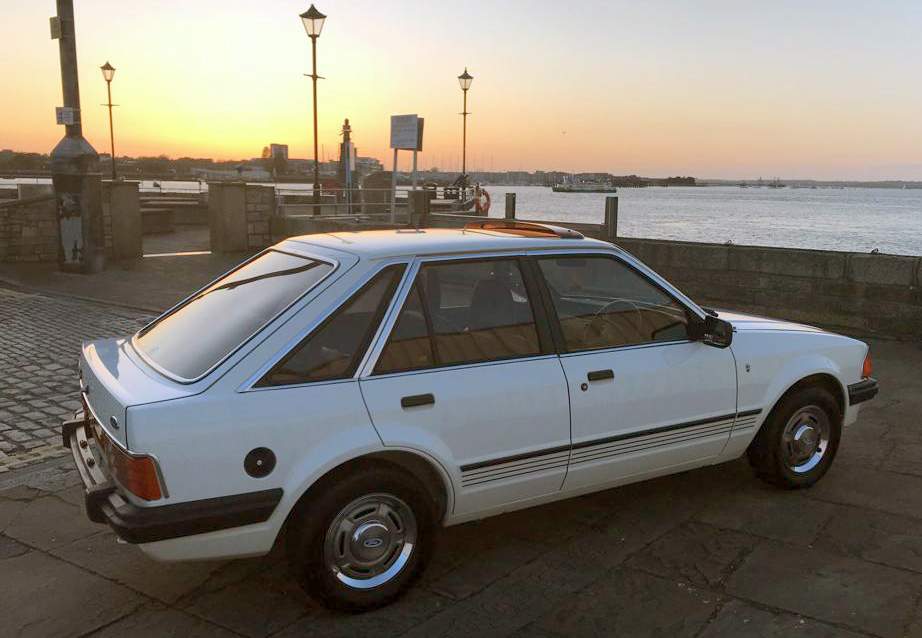1952 Triumph Renown
Triumph Renown was introduced in 1949 as a luxurious up-market saloon. With a distinctive razor edge styling carried over from its predecessor, gave limousine style looks, and indeed a limousine version of the Renown was produced from October 1951 to June 1953. It was an expensive car and in 1951 the price tag was £1285 including purchase tax - nearly double the price smaller Triumph Mayflower for that year. In 1952 the Mk II version was introduced with minor refinements being made along with a 3 inch increase in wheelbase. Sales dropped off soon after this however, and production of the Renown ended late in 1954.To watch video on YouTube: https://youtu.be/fKSk0I2KSe8
Facts Supplied By GB Classic Cars
1954 Riley RME
From 1948 two new body styles were available on the 2½ litre models. These were the Roadster (RMC) and the Drophead Coupe (RMD) and these remained in production until 1950. Styling changes were made in 1952 which included the fitting of full width bumpers and a larger rear windscreen, as well as some improvements to the cars mechanical side such as fully hydraulic brakes. From this point the 1½ litre car was dubbed RME and the 2½ litre car RMF. In 1953 the 2½ litre ended production when it was replaced by the Pathfinder, but the 1½ litre continued to be made until March 1955. To watch video on YouTube: https://youtu.be/EK_BZKVo5Uw
Facts Supplied By GB Classic Cars
1970 Rover P5B Coupe
Rover introduced their all new 3 litre saloon in 1958, and it was their first unitary construction car. Designed by stylist David Bache, it was a very large and distinguished looking vehicle, with a well appointed and luxurious interior. The engine was a 3 litre straight six, which was capable of propelling the car to a respectable 100 mph. In 1960, the car received front wheel disc brakes replacing the original all drum set up. A four door coupe version joined the saloon with the introduction of the Mk II and this featured more comprehensive instrumentation and a lowered roofline. By now both models had received an increase in engine power due to a redesigned cylinder head which had been developed by tuning guru Harry Weslake, this gave the car improved acceleration and a higher top speed. The Mark III version arrived in 1966 and this featured improved seats, and revisions to interior and exterior trim. The next major change occurred in 1967 when the six cylinder engine was replaced by the Buick derived 3.5 litre V8. This new P5B was still to be available in both saloon and coupe versions and in apart from the new Rostyle wheels it was in appearance very similar to the earlier models. The P5B became very popular within the governments of the time and it provided ministerial transport to quite a few well known faces throughout the 1960's & 70's including that of Prime Minister Harold Wilson, who apparently had a special holder fitted to the rear compartment of the car for his favourite pipes! The P5B was discontinued 1973.To watch video on YouTube: https://youtu.be/oB3GYs7P-Vk
Facts Supplied By GB Classic Cars
1981 Ford Escort Ghia
The Escort Mark III was voted European Car of the Year in 1981, fighting off stiff competition from Italy's Fiat Panda and British Leyland's Austin Metro.[36]
From launch, the car was available in base (Popular), L, GL, Ghia and XR3 trim. As was common for Ford during this period, there were different dashboard mouldings for "high" and "low" series trim levels. GL and above models had a slush-moulded dashboard with 'soft feel' covering, and faux chrome embellishment. Base and L specification models had a 'hard feel' injection moulded dashboard with fewer holes for switches - the base dashboard was a sub-variation of this which omitted the centre air vents, glovebox, side demister vents and speaker grille and only a two-position blower fan switch. These lead-in models were extremely basic even for their time; in addition to the aforementioned dashboard, they came with just partial door cards with no armrests, vinyl seats (cloth was an optional extra), and no rear parcel tray or push button tailgate release. Consequently, these models sold very poorly and most buyers opted for at least the L specification.
1984 Mercedes 280 CE
Mercedes launched its W123 range to huge acclaim in 1976. Fabulously well-built and with gracefully understated styling, the car was such an instant success that a booming black market sprang up to service those who wanted to leap-frog the 12-month waiting list.
Most handsome of all were the 230CE and 280CE coupes, based on a shortened W123 saloon platform and with elegant pillar-less side windows. While the 230CE made do with a 2.3-litre four-cylinder engine which produced around 130bhp, the 280CE had a creamy smooth fuel-injected 2.8-litre straight-six which produced an impressive 180bhp and had a top speed of 125mph. It sold steadily until it was finally replaced by the W124 range in 1985.




